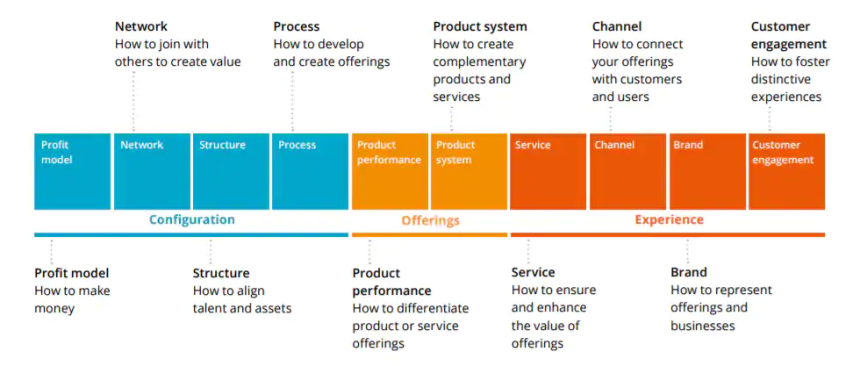Guide: What are the Ten Types of Innovation?
Innovation is about creating value from novelty. How that value is created, and what the novel element might be, are not fixed: this means that innovation can take many forms and types, from innovative products to new services, business models or approaches.
What is defined as innovation within a particular organization will vary according to the sector and industry in which it operates. It may also be determined by the organizational structure and culture, as well as its strategic business objectives. For this reason, it's often useful to review which types of innovation your organization is targeting, if only to check that you are not missing other opportunities.
Innovation consultants Doblin created the Ten Types of Innovation framework to help organizations review and structure their innovation efforts. The framework "can be a diagnostic tool to assess how you're approaching innovation internally, it can help you analyse your competitive environment, and it can reveal gaps and potential opportunities for doing something different and upending the market."
The ten types identified by Doblin are divided into three categories:
-
Configuration types, which focus on how your organization is set up and structured;
-
Offering types, which are about what products or services you provide for your customers or stakeholders; and
-
Experience types, which concentrate on how those products or services are delivered.

Within those three categories, some examples of the ten types are as follows:
Configuration
-
1. Profit Model - A classic example is Rolls-Royce's Power By the Hour model, invented in 1962. Rather than selling aircraft engines as products with a one-off capital cost, the company sells flying hours at a fixed cost per hour. This allows their customers to avoid the burden of significant capital expenditure, while locking them into a maintenance agreement with Rolls-Royce.
-
2. Network - Many organizations are looking at how to use their networks differently to power their innovation efforts. Customer co-creation is a popular network innovation and has been used successfully by Lego, BMW and many others.
-
3. Structure - Organizations are always experimenting with different ways of organizing their assets, people and disciplines, for example by centralizing or outsourcing certain functions. An innovation currently under scrutiny is moving from employing people to working with self-employed suppliers, as in the case of Deliveroo or Uber.
-
4. Process - Henry Ford's automation of the Model T assembly line is one of the most-cited examples of process innovation, but in modern times 'fast fashion' chains such as Zara and Primark have dramatically cut the time from design to clothing being available in store with innovative approaches to their supply chains.
Offering
-
5. Product performance - This is what most people think of as innovation, focusing on new products and services as well as new features for existing ones. Unless it involves some sort of intellectual property protection, this is one of the easiest forms for competitors to copy.
-
6. Product system - By combining products or services into bundles or creating eco-systems around them, organizations can reach new markets or create additional value in existing ones. For example, Colgate originally only sold toothpaste, but has since created an entire product system around dental care, including mouthwash, toothbrushes, and whitening products.
Experience
-
7. Service - Without changing the product or service, organizations can change the way they deliver them to create additional value: for example, Enterprise Rent A Car will deliver your hire car to your door, or come to pick you up so you don't need to travel to the Enterprise office.
-
8. Channel - The rise of digital technology has provided some enormous opportunities for channel innovation, especially in the fintech market. First Direct's success was directly linked to it being the first telephone-only bank with no branches, and recently Monzo, Revolut, Nimbl and Osper and the like have revolutionized banking for adults and children, as well as how we buy foreign currency, through channel innovation.
-
9. Brand - Innovating around a brand can be fraught with danger, so Carlsberg's recent campaign admitting that its lager probably wasn't the best in the world was a brave move. However, sharing negative reviews of their beer in a counter-intuitive move gave them the platform to talk about the new recipe.
-
10. Customer Engagement - How you deliver your product or service is one thing, but what about how you connect with potential customers even before you make a sale, or ensure that your post-sales service is up to scratch? A great example of innovation in this area is the use of chatbots to deal with initial enquiries or direct customers to the right information.
Further Reading:
Image reproduced from: Doblin's Ten Types of Innovation